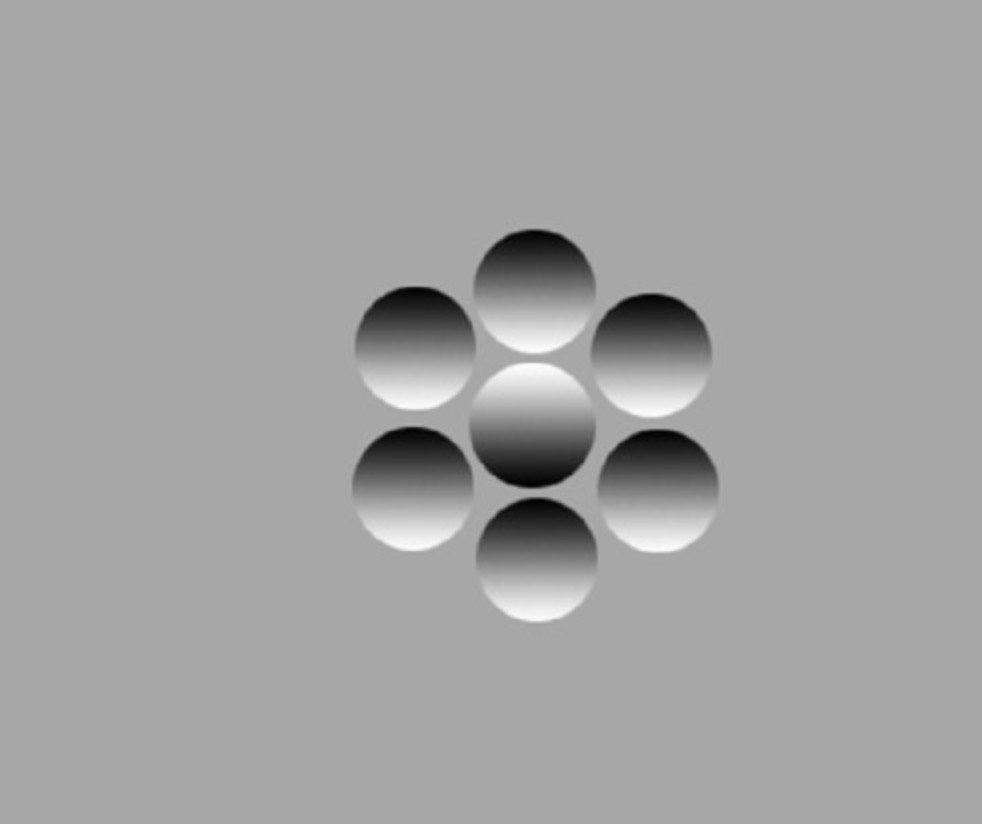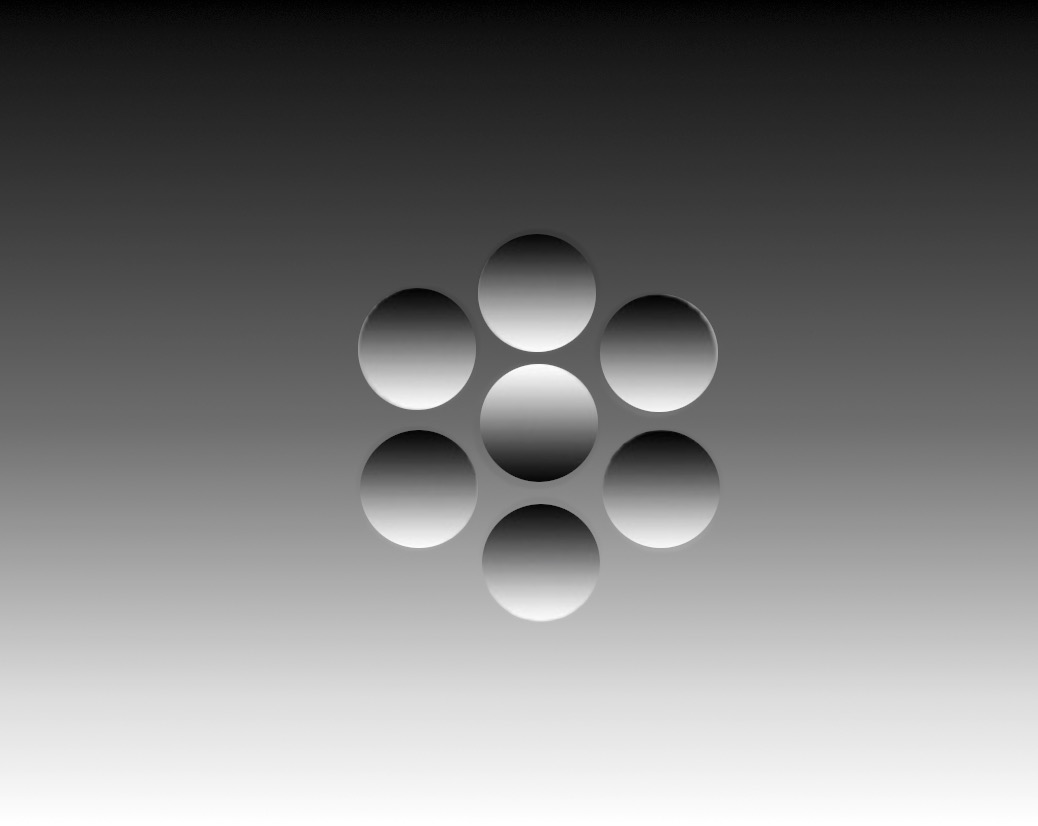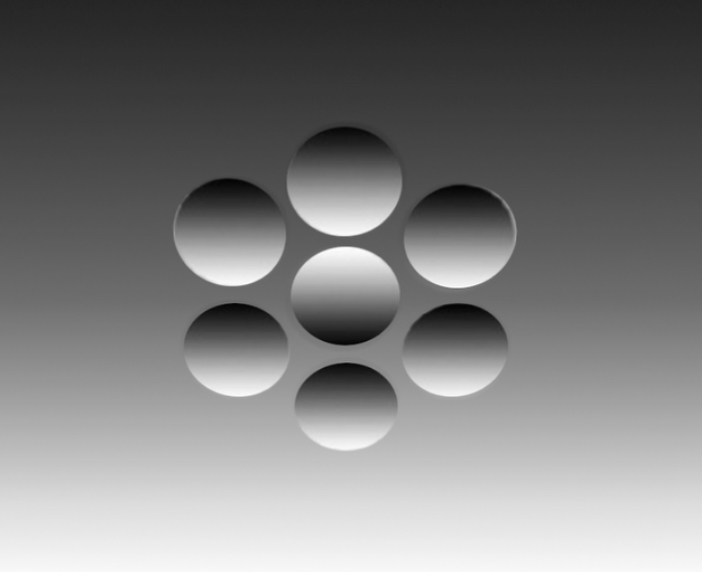9.35 Illusion Laboratory
Spring 2020 Vision Lab
Does the Introduction of External Lighting Cues and Angle Affect Perception of Shape From Shading?
In Ramachandran's paper, Perception of Shape from Shading, he shows that the visual system places certain constraints on our perception of the world. Specifically, in cases where lighting cues are ambiguous, we seem to assume that light is coming from above, as it usually is in nature. He demonstrates this with shaded circles - when we view circles that have shading on the bottom, they appear to be convex, while circles with shading on top appear to be concave, which would only happen if we assumed light was coming from above.
This suggests that, with the addition of external lighting cues, the illusion should change - if there were external light coming from below, the circles with shading on top should appear convex, while the circles with shading on the bottom should appear concave. This is what I aimed to study in my illusion: how does the addition of external lighting cues affect our perception of shape from shading? And if the illusion stays the same, why? Additionally, I tried to see whether the angle at which one viewed the circles mattered. To imitate an external lighting cue, I overlaid a gradient in different directions on the original image of the shaded circles with a gray background. Afterwards, I adjusted the angle using an Instagram editing feature.
Below is the original illusion:

The illusion with an above external lighting cue:
The illusion with an below external lighting cue:

The illusion with a below external lighting cue and a downwards angle:

The illusion with a below external lighting cue and an upwards angle

Here is the link to the paper: Perception of shape from shading
